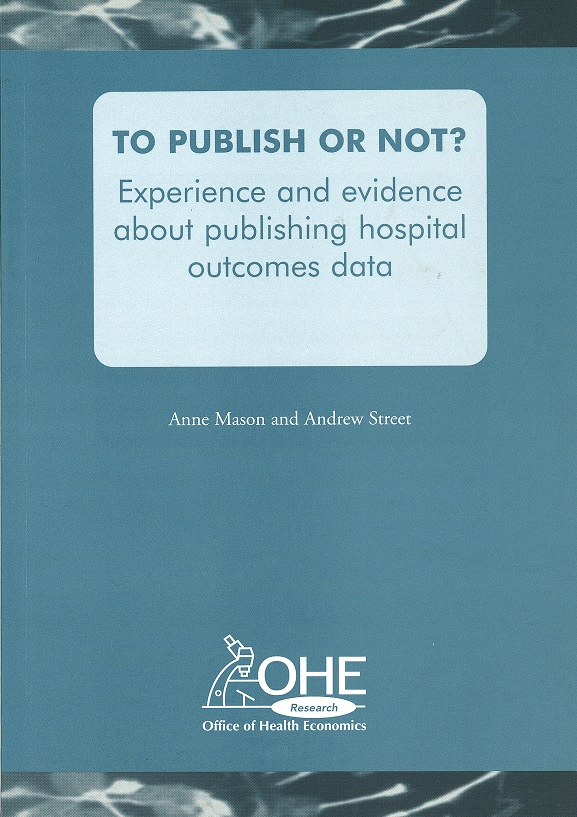Since the mid-1980s, the publication of hospital outcomes data has become increasingly popular. Canada and the US operate performance reporting systems, with similar initiatives planned in…
Since the mid-1980s, the publication of hospital outcomes data has become increasingly popular. Canada and the US operate performance reporting systems, with similar initiatives planned in Australia and New Zealand (Mannion and Davies, 2002). In Europe, outcomes data are collected and published in…
Since the mid-1980s, the publication of hospital outcomes data has become increasingly popular. Canada and the US operate performance reporting systems, with similar initiatives planned in Australia and New Zealand (Mannion and Davies, 2002). In Europe, outcomes data are collected and published in the UK, Italy, Scandinavia and the Netherlands (Marshall and Brook, 2002).
Whilst political and regulatory attitudes differ across countries, the economic motivations are often similar. Concern with escalating health care costs and regional variations in the quality of care has led countries to examine ways to improve value for money from their health systems, one of which is to place key data in the public domain (Marshall et al., 2003, Davies and Lampel, 1998, Fottler et al., 1987). Publication also forms part of a framework of accountability, along with regulation such as audit, accreditation, licensing and inspections; market (or quasi market) forces; and legislation (Davies, 1999). More broadly, publication is a means of realising the key political and cultural objectives of transparency and openness: publication aims to promote – or restore – public trust (Marshall et al., 2000a, Davies and Shields, 1999). A related motivation is that the public places ever more emphasis on a ‘right to know’ about goods and services generally, a right that is recognised in the Freedom of Information Act 2000. Thus, the availability of information is also valued for its own sake, whether or not this changes behaviour.
The aims of this report are to describe and discuss particular systems of publication of hospital outcomes data in some detail, to present a critique of what these systems, why they were set up and how they operate, and to explore the potential implications for policy and practice in the UK health care system.
